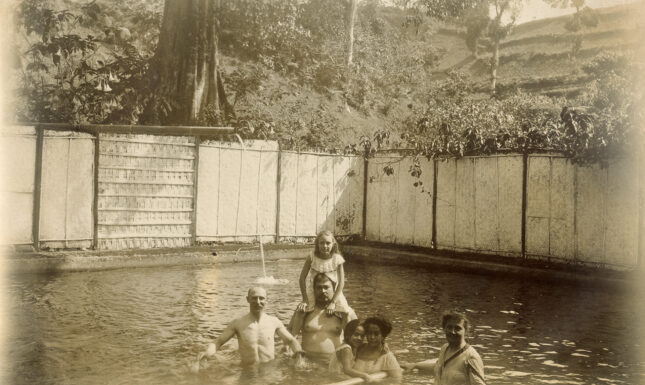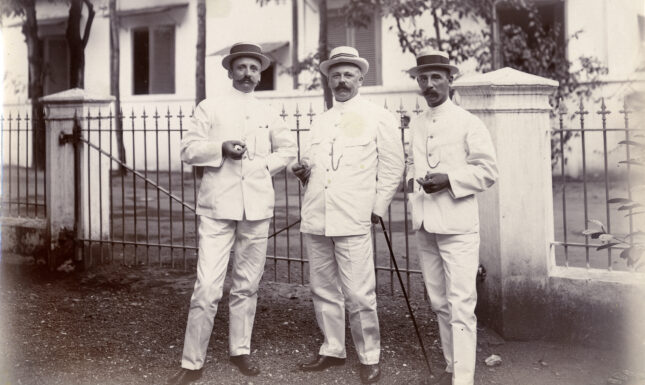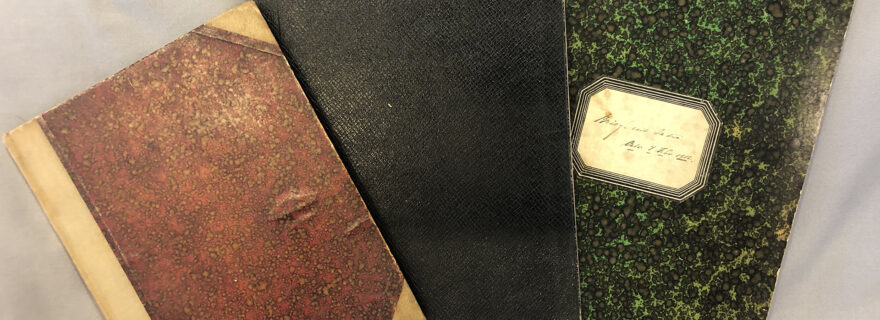The success story of Jacques Aanstoots, electrical engineer in the Dutch East Indies: part 2
The Special Collections of Leiden University hold the diaries of Jacques Aanstoots (1910-1912). They attract the attention of the Dutch readership for the name of the writer alone: ‘aanstoot’ means ‘offence’ in Dutch. Who was he? What did he write? And how did ‘his’ writings function?
Diary and identity construction
Jacques Aanstoots' surviving notes on his life in the Dutch East Indies, which I briefly introduced in my previous blog post, first of all makes us think critically about the modern diary as a heterogeneous text type. For instance, it disproves the still widespread assumption that writers of the genre are only talking to themselves. In addition, this source can enhance our knowledge of twentieth-century European diary culture in the Dutch East Indies. An analysis of the notes can show what function diaries at the time could fulfil in (re)defining the self, especially when the author had to place him or herself from Europe in the for him or her still unknown Dutch East Indies culture.
It is well known that, besides having pedagogical, educational, religious and emotional purposes, keeping a diary can help conform to everyday life and fit into expected social roles. Writing in a diary helped Aanstoots to adjust to his new life in the colony: it gave him the opportunity to construct a new self that (he expected) could successfully take root in Dutch East Indies society.


The diaries do not reveal any uncertainty about his future in the tropics. Without exception, he represents himself in positive terms: he is 'courageous', 'as healthy as a fish' and ‘tactful’; has a 'good body' and is not at all bothered by the tropical heat or the heaving sea. According to the text, fellow passengers and table partners praise his knowledge of modern languages and his flattering dinner jacket. His colleagues appear to envy him: they look with jealousy at how smoothly he manages to move around on board. After announcing that he is to be a member of the jury at the masquerade ball, Aanstoots continues:
Aanstoots emphasizes his own qualities for making a career in the Dutch East Indies by noting how much difficulty other passengers have with foreign languages, the heat and the rough seas on their first voyage, how clumsy the manners of his colleagues are later on in Batavia, or by mentioning in his notes distinguished fellow travellers speaking out about him. ‘There you have him, (pointing at me) that man has all the qualities to succeed in the Dutch East Indies,' says Briel, director of the training college in Surabaya.


From the diary, Aanstoots emerges as a man who quickly learns the ways of the European who has been in the East Indies for a long time. He knows how to address the indigenous servants. He immediately stops using sanitary paper on the toilet and uses a bottle of water instead (‘the Indies method’). And he instantly likes the rijsttafel for lunch in Batavia. Proudly, Aanstoots recounts in his diary how he had been told by various quarters that he looked like someone who had lived in the East Indies for a long time because of his sandals and the good cut and beautiful thin fabric of his pajamas. Aanstoots' diaries show that from the very beginning he adopted elements from the Indies culture. He did not show himself to be an outspoken opponent of the blending of the Indies and Dutch cultures, as the Dutch feminist Aletta Jacobs was, around the same time. Even before the ship arrived in Southampton, Aanstoots went to bed in sleep trousers and kebaya (a jacket-blouse traditionally worn in Southeast Asia). He noted his complete satisfaction with the garment: 'One sleeps wonderfully in those fresh clothes'.
All in all, Jacques Aanstoots was able to use his diary to build up a self-image that corresponded to what he saw as the successful representative of the European man in the Dutch East Indies. According to him, such a person not only had to be able to cope with the tropical heat and storms at sea, but also adapt his behavior, to a certain extent, to the Dutch East Indies culture. The diary can be seen as a means to shape the necessary change of identity. Yet other reasons can be given for this glorious self-image, which also have to do with the functioning of this text. The positive self-representation would comfort his wife and daughter who initially still lived in The Hague. The image would be highly valued by family and acquaintances in the Netherlands, to whom Sophie Aanstoots would sometimes read a passage from the diary. Moreover, it assured Jacques Aanstoots that he, his family and the generations that followed would look back on his life in awe.
Further reading
The diary of J. Aanstoots is mentioned in the ‘Repertory of Handwritten Egodocuments of Dutch People from the Nineteenth Century’, compiled by Arianne Baggerman, Rudolf Dekker, Ellen Grabowsky and Gerard Schulte Nordholt. The repertory can be consulted digitally via http://www.egodocument.net/rep.... To date, no further attention has been paid to Aantstoot's ego document by others.
For a useful introduction to the use of diaries as a primary source, see C. Hämmerle, ‘Diaries’ in: M. Dobson and B. Ziemann eds., Reading Primary Sources. The Interpretation of Texts from Nineteenth and Twentieth Century History (2nd Edition; London 2020), 160-180.
The backgrounds and fates of the Dutch emigrants who left for the Dutch East Indies in the nineteenth and first half of the twentieth century are outlined in Ulbe Bosma's readable study Indiëgangers. Verhalen van Nederlanders die naar Indië trokken (Amsterdam, 2010).
Nick Tomberge is a PhD student at the Leiden University Centre for the Arts in Society.

